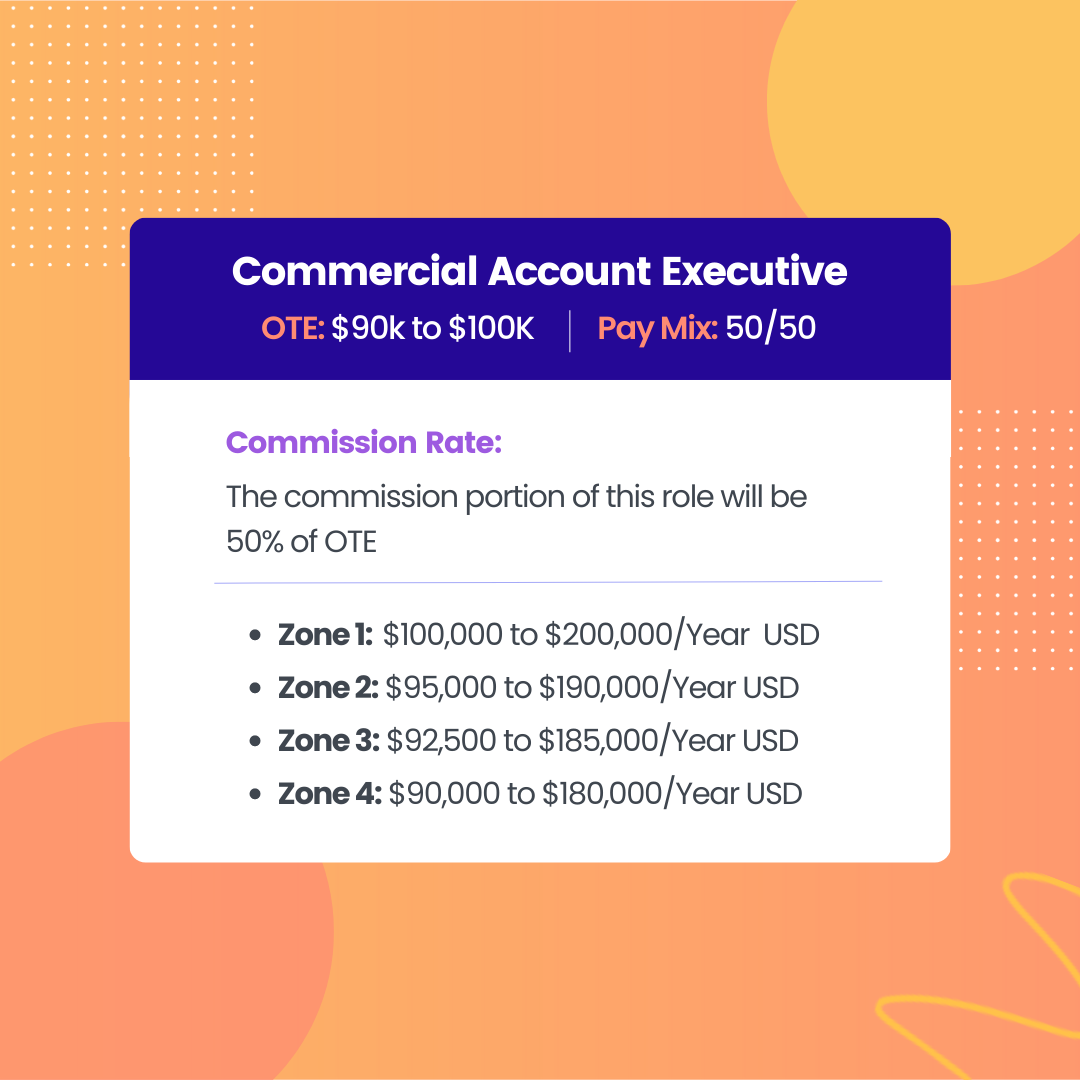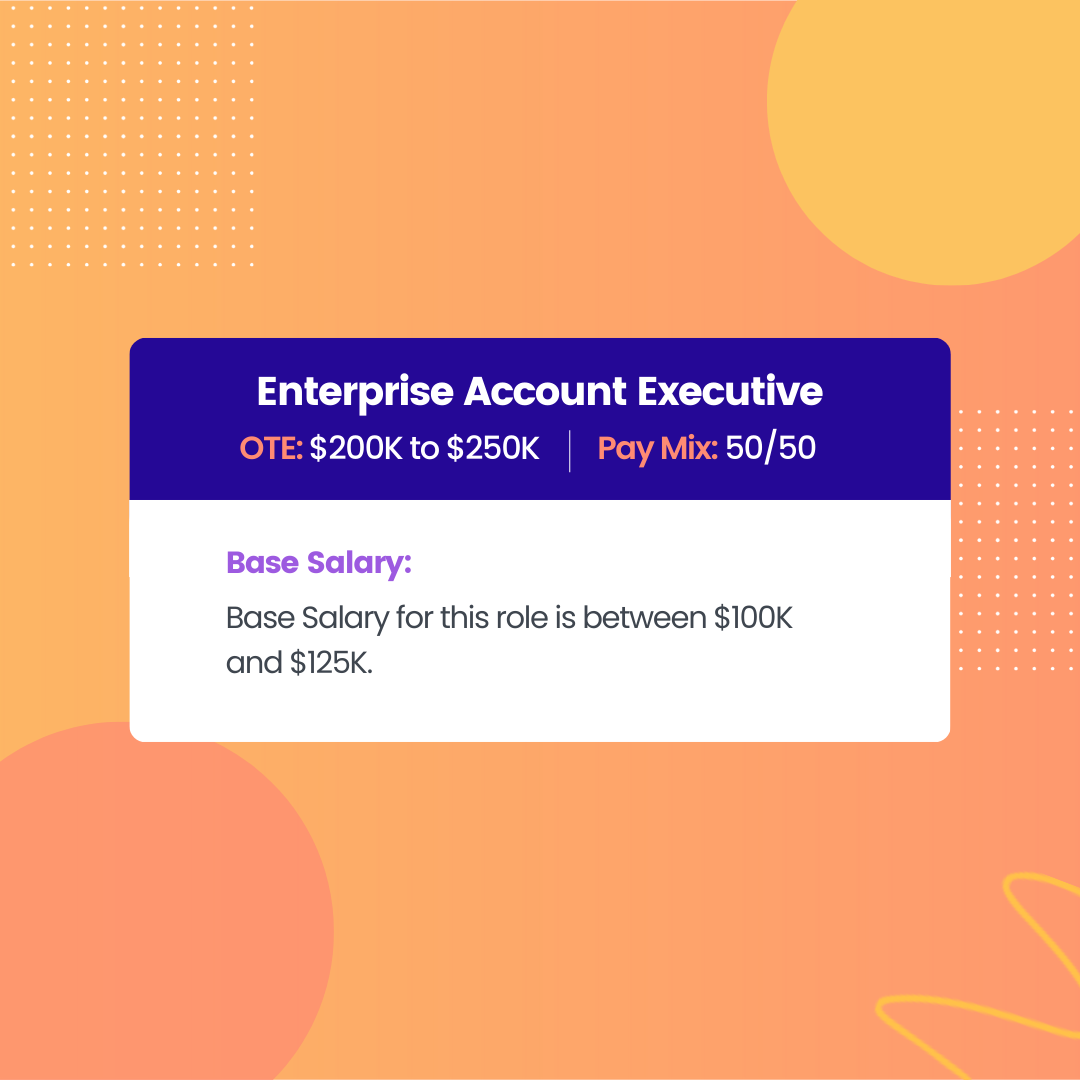
Total Target Compensation
In sales, total target compensation– sometimes called on target earnings– refers to the total amount of money a salesperson will bring home if they hit the milestones set for them.Continue Reading

What is On-Target Earnings (OTE)?
On-target earnings (OTE), sometimes referred to as on-track earnings, is a term used in sales or commission-earning roles that refers to the total compensation an employee will receive if they hit their goals or targets. OTE includes both base salary and sales commission.
The formula used to calculate OTE is relatively simple. You simply add annual base salary to the amount of commission a rep can expect to earn at 100% quota attainment.

When determining on-target earnings for a role, there are several factors you must take into consideration.
On-target earnings will vary across compensation plans, industries, job functions, location, experience and more. The numbers we reference below are meant to be used as broad benchmarks and are all sourced from builtin.com.
Remember, your own sales compensation plans should be based on more factors than benchmarks alone, but these will give you a rough idea of expected total pay for different sales roles.
Although most people who work in sales will automatically assume some part of their annual salary will come from commission or performance based pay, the benefits of clearly defining your OTE are both strategic and necessary.
For one, a clearly defined pay structure and OTE help employees understand the direct link between their performance and their compensation. This can be a powerful motivator for sales professionals, who often thrive on competition and a desire to achieve more.
OTE is also important because it can be used as a tool to help companies attract and retain top sales talent. In a competitive job market, companies that offer attractive OTE packages are more likely to win over talented candidates who are motivated by financial incentives.
And arguably the most important benefit of having a clearly defined OTE is that it’s a critical component of compensation strategy and sales planning. Without established target earnings, it’s impossible to understand how sales reps and teams will contribute to overall revenue goals.
If you’re doing the necessary leg work to set your organization up for success, you’re likely already used to calculating and understanding OTE.
There is some debate among sales professionals about how realistic OTE should be. Some argue that setting an overly ambitious OTE can lead to burnout and lack of motivation. Think about it this way, if employees feel like their goals are impossible to achieve or that they have no chance of hitting their targets, it will be incredibly difficult to motivate and incentivize reps.
Others argue that a slightly higher OTE can be a powerful motivator for high-performing sales professionals, who may be more likely to stay engaged and motivated if they feel that there is always more to achieve. Ultimately, the best approach may depend on the specific company culture, industry, and employee base.
One potential compromise is to set OTE targets that are challenging but achievable, with room for additional incentives or accelerators for exceptional performance. This approach can strike a balance between motivating employees and avoiding demotivation or burnout.
At Spiff, we believe that OTE should always be realistic and achievable. Incentivize your sales representatives with other elements of your comp plan. Don’t set sales quotas too high just to see how far you can push your sales team and then pretend those numbers are realistic targets. Doing so will set you and your team up for failure and will create an environment of distrust in your sales organization.
There are several benefits to using OTE to determine salary structure in sales roles.
First, it can motivate sales professionals to work harder and achieve more by setting the expectation for “normal” performance. By tying compensation directly to performance, and providing a benchmark like OTE, sales professionals understand what’s expected of them and have a target to work towards.
Second, it can help companies attract and retain top sales talent. In a competitive job market, companies that offer attractive OTE packages are more likely to win over talented candidates who are motivated by financial incentives.
Third, it can help companies achieve their revenue goals. Using data to calculate OTE and aligning OTE to overarching revenue targets, is the only way to ensure you have the resources and sales reps you need to achieve your goals as an organization.
Here are some real life examples of how OTE is used in job descriptions– all pulled from active listings on LinkedIn:
OTE: $90,000 to $100,000 with a 50/50 split

OTE: $200,000 to $250,000 with a 50/50 split

OTE: $75,000 to $100,000 with a tiered commission structure

As previously discussed, OTE will vary for any given role based on a number of factors including longer sales cycles, commission percentage, industry, product pricing, and more. These examples are just meant to illustrate the variety of ways OTE can be expressed in a job listing.
If you’re preparing your own job descriptions, remember to include OTE, commission rate, and employee base salary to paint the most accurate picture.
Auditing OTE can help you ensure that your sales pay is fair and adequate. An OTE audit may involve reviewing commission structures, sales targets, and performance metrics periodically to ensure that they are aligned with the company’s overall revenue goals and are motivating sales professionals to perform at their best.
It may also involve reviewing the OTE packages of individual employees to ensure that they are being compensated fairly based on their performance and the company’s overall compensation structure.
SaaS companies are incredibly metric driven, but when it comes to settings quotas there seems to be a lot of guesswork. The typical response is “A good ratio for setting a quota is 4x-5x the AE’s OTE and the best companies do somewhere between 6x-8x.” Sales compensation benchmarks are great, but every company is different and purely basing quota on a multiple of OTE doesn’t take into account a lot of important factors.
We’ve seen a lot of different sales compensation plans during the implementation of Spiff at our clients. Sometimes they want a quick and easy translation from spreadsheets to our object-oriented system or they’re desperate to motivate their reps and ask our advice on how exactly we would do that. While every company has unique needs that fit their situation, our friends at SaaStr have put together a template for SaaS companies to follow.
Spiff and Brevet recently conducted a survey to better understand the policies and practices of SaaS compensation plans for sales teams. More specifically, the research addressed the most common questions around sales crediting, mega deals, accelerators, new-hire compensation, and spiffs. The goal of the research is to help your organization make better-informed decisions around these policies and practices.